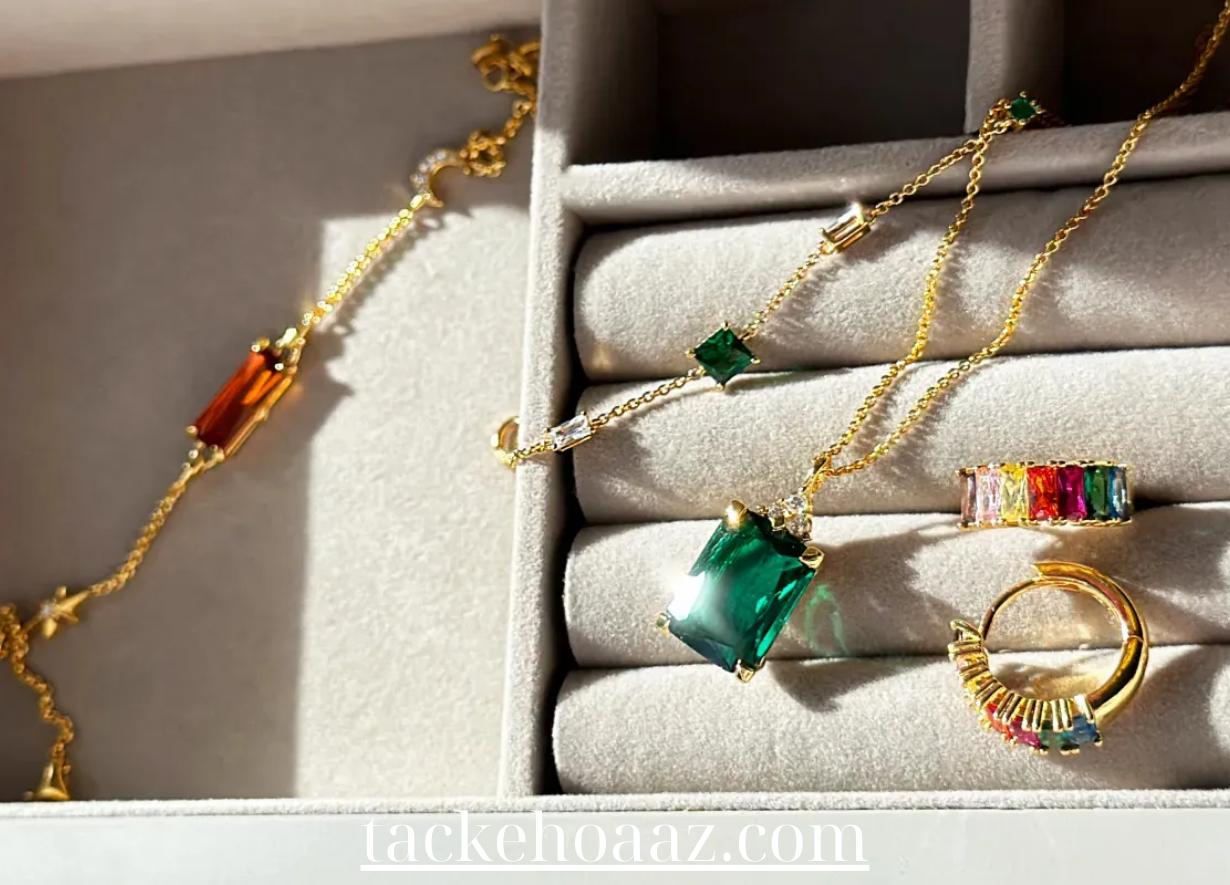Jewelry, whether an heirloom or a beloved everyday accessory, needs regular care to maintain its brilliance and longevity. Proper upkeep ensures that your precious pieces remain beautiful, functional, and free from damage. Whether you’re looking after premium jewelry or costume pieces, these routine maintenance tips will help keep your collection in pristine condition.
1. Regular Cleaning: Keep Jewelry Sparkling
Dirt, oil, and everyday pollutants can dull the shine of your jewelry over time. Regular cleaning helps restore its sparkle and removes any buildup.
- Premium Jewelry: Clean gold, platinum, and diamond jewelry every few weeks using a mild detergent and warm water. Gently scrub the piece with a soft toothbrush, paying special attention to hard-to-reach areas like settings or clasps. Rinse thoroughly and pat dry with a soft cloth.
- Costume Jewelry: For pieces that contain plated metals or delicate embellishments, avoid using water. Instead, wipe them down with a soft, dry cloth. For heavier dirt, use a damp cloth but be cautious not to over-saturate the piece, as moisture can weaken glue and cause tarnishing.
2. Inspect Regularly: Catch Issues Early
Regular inspection of your jewelry can help identify small problems before they become bigger issues, such as loose stones or worn prongs.
- Premium Jewelry: Check rings, necklaces, and bracelets for loose stones or weakened prongs, especially after wearing them. For pieces with gemstones, ensure that settings are secure. Loose stones can often be repaired by a jeweler if caught early.
- Costume Jewelry: Look for any signs of peeling, chipping, or loosening of glued components. If you notice metal discoloration or plating wearing off, consider touch-up solutions such as jewelry paint or plating kits.
3. Polishing: Restore Shine
Polishing helps restore the shine and removes minor scratches from metal surfaces.
- Gold and Platinum Jewelry: Use a jewelry polishing cloth to buff these metals, ensuring a high-shine finish. Avoid abrasive chemicals or materials that can scratch the metal.
- Silver Jewelry: Silver can tarnish easily, so using a silver polishing cloth regularly is key. For more stubborn tarnish, consider a professional silver cleaning solution, but avoid over-polishing to prevent wearing down the metal.
4. Store Properly: Prevent Damage and Tarnishing
Proper storage is crucial for preserving your jewelry’s condition when not in use.
- Premium Jewelry: Store each piece separately in soft-lined boxes or velvet pouches to avoid scratches or tangling. For silver jewelry, consider using anti-tarnish strips or bags to slow down the oxidation process.
- Costume Jewelry: Avoid storing costume pieces in humid environments, as moisture can cause tarnishing or corrosion. Use small plastic bags or pouches, and keep necklaces or bracelets untangled by laying them flat or hanging them on hooks.
5. Rotate Your Jewelry: Avoid Overuse
Constant use of the same jewelry can lead to wear and tear over time. Rotate your jewelry to give each piece a break.
- Best Practice: Switch up your jewelry regularly to reduce strain on frequently worn items. This not only prevents unnecessary wear but also helps extend the life of delicate pieces like rings or necklaces.
6. Avoid Exposure to Chemicals: Protect the Finish
Chemicals found in everyday products can tarnish or damage jewelry.
- Perfumes, Lotions, and Makeup: Always apply these products before putting on your jewelry, as they contain oils and chemicals that can dull the shine of both metals and gemstones.
- Household Cleaners: Remove jewelry before doing household chores, especially if working with harsh cleaning agents like bleach, ammonia, or chlorine, as they can corrode metals and damage stones.
7. Remove Jewelry When Necessary: Prevent Accidental Damage
Certain activities can put your jewelry at risk of damage or loss. Be mindful of when to remove your pieces.
- Swimming: Saltwater and chlorine can dull metals and damage gemstones. Always remove jewelry before swimming in the ocean or pool.
- Exercise and Sports: High-impact activities can knock loose stones or scratch surfaces, so it’s best to remove rings, necklaces, and bracelets before engaging in physical activity.
- Showering: While most premium jewelry can withstand water, soap and shampoo can leave a film on metal and stones, dulling their shine.
8. Professional Inspections: Annual Maintenance for High-Value Jewelry
For premium jewelry, it’s important to have an annual check-up with a jeweler.
- Inspection and Cleaning: Professional jewelers can inspect settings, prongs, and clasps to ensure everything is secure. They can also deep-clean your jewelry, restoring its shine and brilliance in a way that home cleaning can’t.
- Resizing and Repairs: If rings or bracelets no longer fit correctly or show signs of wear, a jeweler can resize or repair them to extend their life.
9. Address Tarnish Quickly: Avoid Long-Term Damage
Tarnish is a natural process that occurs when metals react with the air, particularly silver and gold-plated pieces.
- Silver Jewelry: Use a silver cleaning solution or a polishing cloth to remove tarnish as soon as it’s noticed. The longer you wait, the harder it can be to clean.
- Gold-Plated Jewelry: Once the gold plating begins to tarnish or wear off, it may be necessary to replate the piece. Many jewelers offer replating services to restore the original look.
10. Invest in Jewelry Insurance: Protect Your Precious Pieces
For valuable jewelry, especially engagement rings or heirlooms, insurance is a wise investment.
- Jewelry Insurance: Many insurance policies cover loss, theft, or damage. Be sure to have your jewelry appraised and keep documentation and photographs of each piece to ensure full coverage.
Conclusion
Routine jewelry upkeep is essential to preserving the beauty, value, and integrity of your precious pieces. By regularly cleaning, inspecting, and storing your jewelry properly, you can enjoy its sparkle and brilliance for years to come. Incorporating these best practices into your routine will ensure that your favorite items remain as stunning and wearable as the day you first acquired them.
